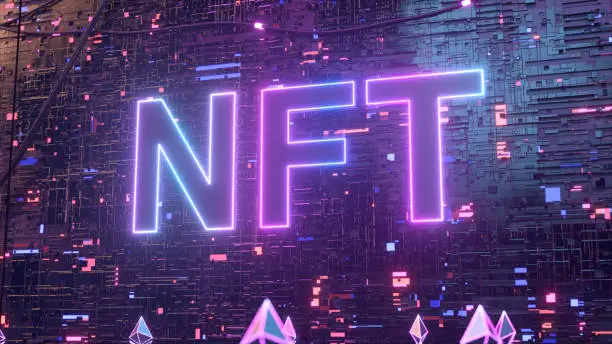Non-fungible tokens (NFTs) have taken the digital art and collectibles world by storm, offering a new way to buy, sell, and trade unique digital assets.
With growing interest in NFTs as an investment opportunity, it’s crucial to understand the market, the potential risks, and the steps involved in investing. In this comprehensive guide, we will explore how to invest in NFTs, covering everything from research and platforms to valuation and long-term strategies.
Understanding NFTs
a. What are NFTs?
Non-fungible tokens (NFTs) are unique digital assets that represent ownership of a specific item or piece of content, such as digital art, music, virtual real estate, or even tweets. NFTs are built on blockchain technology, which ensures their authenticity, provenance, and scarcity.
b. Fungible vs. Non-fungible
Fungible tokens, like cryptocurrencies (e.g., Bitcoin or Ethereum), are interchangeable and hold equal value. In contrast, non-fungible tokens are unique and cannot be exchanged on a one-to-one basis, as each NFT has its distinct characteristics and value.
c. Blockchain and Smart Contracts
NFTs are typically built on the Ethereum blockchain, which uses smart contracts to establish the rules and functionality of the NFT, such as ownership, transferability, and royalties. Other blockchains, like Binance Smart Chain and Flow, also support NFTs.
Research and Education
a. Market Trends
Before investing in NFTs, it’s essential to research market trends, understand the factors driving value, and identify emerging trends that could shape the future of the NFT market.
b. Notable Projects and Artists
Familiarize yourself with notable NFT projects, artists, and collections that have gained traction and success. This knowledge will help you make informed decisions when choosing which NFTs to invest in.
c. Community Involvement
Join online communities, such as Discord servers, forums, or social media groups, to engage with other NFT enthusiasts, collectors, and investors. These communities can provide valuable insights, market analysis, and potential investment opportunities.
d. NFT Valuation
Learn how to value NFTs by considering factors such as rarity, utility, provenance, and artist reputation. Understanding NFT valuation is critical for making smart investment decisions and avoiding overpaying for assets.
Choosing the Right Platform
a. NFT Marketplaces
Several marketplaces facilitate the buying, selling, and trading of NFTs, such as OpenSea, Rarible, and Foundation. Research the features, fees, and reputation of various platforms before choosing one for your investments.
b. Wallets and Crypto Exchanges
Investing in NFTs requires a digital wallet to store your assets and a cryptocurrency exchange to purchase the necessary cryptocurrency (usually Ethereum) to buy NFTs. Popular wallets include MetaMask, Trust Wallet, and Coinbase Wallet, while well-known exchanges include Coinbase, Binance, and Kraken.
Developing an Investment Strategy
a. Diversification
Diversify your NFT investments across various types of assets, artists, and platforms to spread risk and potentially increase returns. This approach can help protect your portfolio from market volatility and specific asset underperformance.
b. Budgeting
Set a budget for your NFT investments and avoid overspending. NFT markets can be highly speculative, and it’s essential to only invest what you can afford to lose.
c. Long-term vs. Short-term
Determine whether you’re aiming for short-term gains through trading or long-term growth by holding assets. Your investment strategy will depend
on your financial goals, risk tolerance, and market outlook. Short-term traders may focus on capitalizing on market trends and hype, while long-term investors may seek to acquire high-quality NFTs with lasting value.
Due Diligence and Risk Assessment
a. Authenticity and Provenance
Verify the authenticity and provenance of NFTs before investing. Research the artist, collection, or project, and confirm that the NFT is minted on a reputable platform. Check the asset’s transaction history on the blockchain to ensure its legitimacy.
b. Intellectual Property and Usage Rights
Understand the intellectual property and usage rights associated with the NFT. Owning an NFT may not grant you full rights to the underlying asset, such as the ability to reproduce or commercialize the content.
c. Market Volatility and Speculation
NFT markets can be highly volatile, and prices can fluctuate rapidly. Be prepared for market swings and understand that investing in NFTs carries inherent risk, particularly given the speculative nature of the market.
Acquiring NFTs
a. Primary Sales
Primary sales occur when an artist or creator initially releases their NFTs on a marketplace or platform. These sales often have fixed prices or take place through auctions, where potential buyers bid on the NFTs.
b. Secondary Sales
Secondary sales occur when NFTs are resold by their current owners. These sales typically take place on NFT marketplaces, where prices may be set by the seller or determined through auctions.
c. Crypto Payments
To purchase NFTs, you will need to acquire the appropriate cryptocurrency, usually Ethereum. Buy cryptocurrency on a trusted exchange and transfer it to your digital wallet. From there, you can use the funds to buy NFTs on your chosen platform.
Managing and Protecting Your NFT Investments
a. Digital Wallet Security
Ensure your digital wallet is secure by using strong passwords, enabling two-factor authentication, and keeping your private keys safe. Wallet security is crucial for safeguarding your NFT investments.
b. Portfolio Management
Monitor the performance of your NFT portfolio and stay informed about market developments, trends, and news. Regularly assess your investment strategy and adjust it as necessary to achieve your financial goals.
c. Selling and Trading NFTs
When selling or trading NFTs, consider factors such as market demand, asset valuation, and potential future growth. Be prepared to adjust your asking price or accept offers based on market conditions and your investment objectives.
Conclusion
Investing in NFTs can be a rewarding experience, but it requires thorough research, due diligence, and a well-defined strategy. By understanding the market, choosing the right platforms, and managing risks, you can navigate the world of NFT investing with confidence. Remember that, like any investment, NFTs carry risks and potential rewards, and it’s essential to approach the market with a clear plan and realistic expectations.






